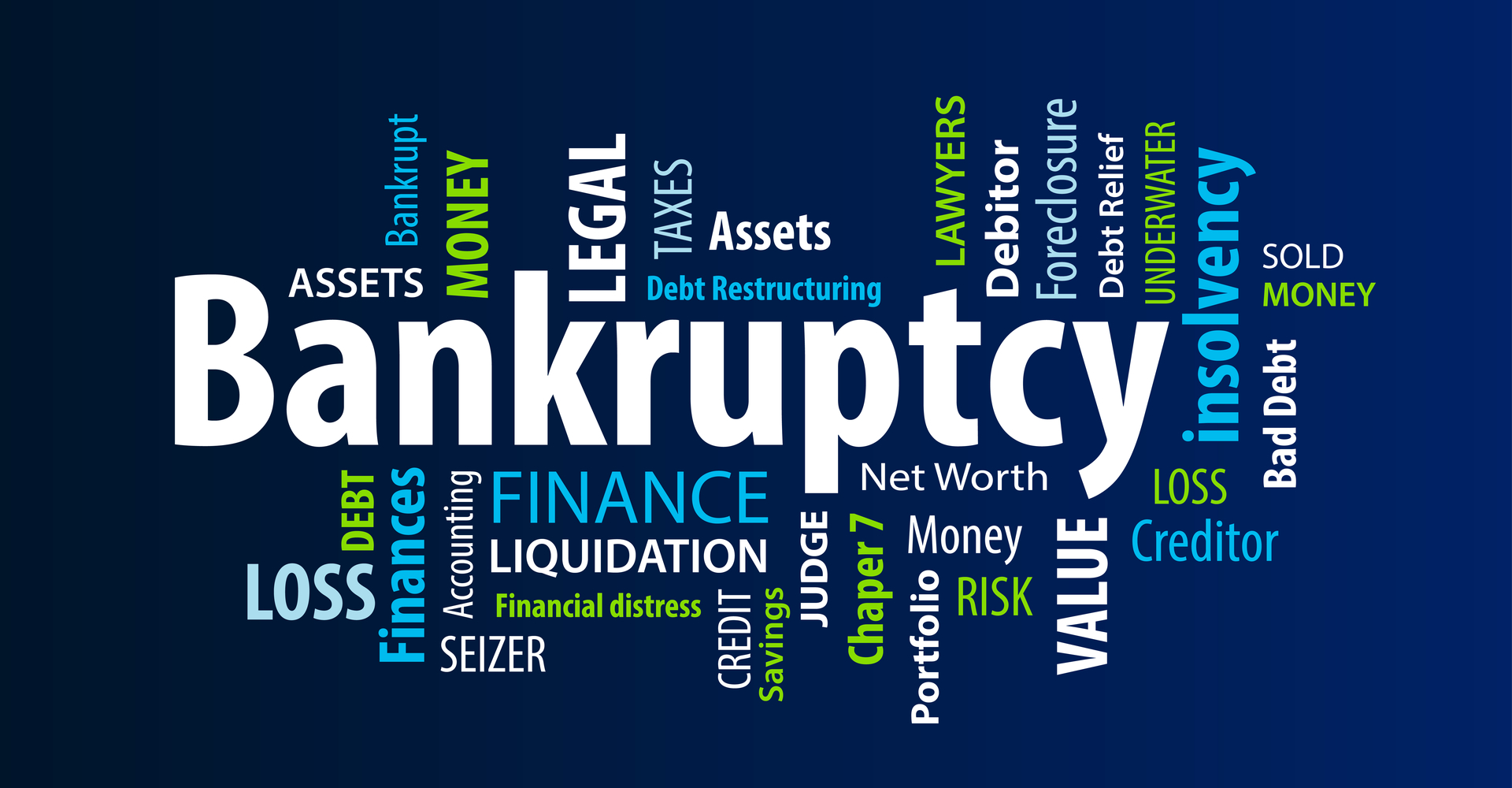The thought of filing bankruptcy can be scary and many people struggle with the decision of whether to file bankruptcy. However, bankruptcy is not as ominous as everyone believes. The fact is, bankruptcy can give you some breathing room to get your financial situation back in order and even discharge some or all of the debts that are too overwhelming. One of those debts may even be tax debt.
Finding a way out from under a large tax debt is no easy task but, there are a few options available. The most commonly referred to relief is the Offer in Compromise, a settlement program setup to allow taxpayers to reduce their tax debt directly with the IRS (for more information on Offers in Compromise see Financial Qualifications You Need To Know For An Offer In Compromise). The problem is, not everyone qualifies for this type of relief. If you are someone that does not qualify for an OIC, you should know how and when bankruptcy can help. Before we get into the specifics, lets review some basic information about bankruptcy.
What Chapters of Bankruptcy Can Include Tax Debt?
In total there are six Chapters of bankruptcy (7, 9, 11, 12, 13, and 15). For our purposes we will be discussing chapters 7, 11, and 13, due to the fact that Chapters 9, 12 and 15 are geared more towards specific individuals or entities. Here is a brief summary of the Chapters we will be discussing:
Chapter 7 Bankruptcy: fully discharges your allowable debts. To put it as simply as possible, the bankruptcy court will take control of your assets and liquidate them to pay your creditors. If your assets are not sufficient to pay off all your creditors, you are no longer liable to pay those creditors once the bankruptcy is discharged.
Chapter 11 Bankruptcy: similar to a Chapter 13 because it is a reorganization of debt and repayment plan. The difference is that Chapter 11 is used for incorporated businesses or individuals whose secured debts are more than $1,184,200 and unsecured debts exceed $349,725.
Chapter 13 Bankruptcy: a reorganization of debt where there is a multi-year court approved payment plan for you to repay your tax debt. Some debts are also able to be discharged as well.
For more information on the different chapters of bankruptcy you can visit The United States Courts website.
Qualifying For Bankruptcy

Many people believe they will be able to include their tax debt in bankruptcy. This is not always the case. Before even looking at whether tax debt can be included, you will first need to qualify for bankruptcy. After you determine if you qualify for bankruptcy, you can see if your tax debt can be included. The reason this step is important is because even if the tax debt cannot be included, bankruptcy may still make sense to get your other debts into a more manageable position.
The following list is a brief overview of the typical qualifications for Chapter 7, 11, and 13 bankruptcy.
Chapter 7:
- Your debts total more than half your income.
- It would take 5 or more years to pay off your debts.
- You have little to no disposable income.
Chapter 11:
- Secured debt (mortgage, vehicle loans, etc.) exceed $1,184,200.
- Unsecured debt (credit cards) exceed $394,725.
- Used by individuals or businesses with multiple assets.
Chapter 13:
- Secured debt must be below $1,184,200.
- Unsecured debt must be below $349,725.
- Must be able to show there is enough income to repay all or part of your debts.
- Must have filed at least the last four years of federal and state tax returns.
Again, this is a brief look at some of the various qualifications for bankruptcy. A more detailed analysis is needed to actually determine whether bankruptcy is an option and/or right for your situation.
Qualifying To Discharge Tax Debt
Once you have determined what type of bankruptcy you qualify for, you can move on to determining whether or not bankruptcy will help reduce or eliminate your tax debt. In order to be dischargeable, the tax debt must meet the rules outlined in 11 USC § 523(a)(1) and 507(a)(8). First and foremost, only certain tax debts may be discharged in a bankruptcy. If you have payroll tax debt or fraud penalties, these will not be dischargeable. Second, Chapter 11 and Chapter 13 bankruptcies generally do not discharge tax debt. They simply reorganize your debts, meaning the tax debt will be rolled into the reorganization / payment plan. Therefore, Chapter 7 bankruptcy is your best chance to discharge a tax debt.
Note: If you owe back taxes for multiple years, keep in mind that your total amount owed is actually made up of smaller amounts that are associated with individual tax years.
The following qualifications must all be satisfied in order to include the tax debt:
The 3-Year Rule
The due date for filing the return that the tax debt comes from was at least 3 years ago (this includes extensions).
Note: Remember, the due date for filing a tax return occurs in the following year. If a Chapter 7 bankruptcy was filed on April 14, 2020, any tax debts coming from the years 2016 to current would not be dischargeable because the due date for the 2016 tax return was April 15th of 2017 (this is assuming no extensions were filed). In this example, you would have missed the 3-year rule by one day.
The 2-Year Rule
The tax return that the tax debt comes from must have been filed at least 2 years prior to the bankruptcy being filed.

The 240-Day Rule
The tax debt must have been assessed 240 days prior to the bankruptcy being filed.
Note: It is important to remember that if you owe taxes for multiple tax years, the assessment date for each tax year will most likely be different. The same goes for if you had years that were audited or years where you filed your returns late.
Fraud Rules
The tax return must not have been filed fraudulently and you must not have been found guilty of tax evasion.
Jurisdictional Issues
You should also know there are jurisdictional splits on late filed returns and substitute for returns (SFRs). Essentially, jurisdictions treat these situations differently for bankruptcy purposes. In some jurisdictions, if you late file a return, you will no longer be able to discharge the tax debt. In others, having a substitute for return (SFR) processed by the IRS can bar you from discharging the tax debt, even if you later file the return. Ultimately, it is advisable to seek legal help when analyzing these types of situations.
For more information on SFRs see our blog Five Things You Should Know About IRS Audits and The Audit Process under the section Missing Tax Returns.
Conclusion
Bankruptcy should not scare you, especially if you are experiencing a financial hardship. Depending on your situation, bankruptcy could be a great option for eliminating debts (or at least getting your debts in a more manageable position). The first step is to figure out if you qualify for bankruptcy and then see if your tax debt can be included. Not all chapters of bankruptcy discharge tax debt and the tax debt must meet certain qualifications to be included. Determining if bankruptcy is right for you is a fact intensive question. Therefore, you should always seek counsel from an experienced bankruptcy attorney.
Related Articles
